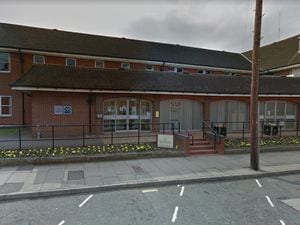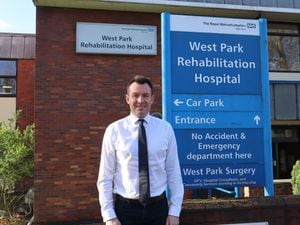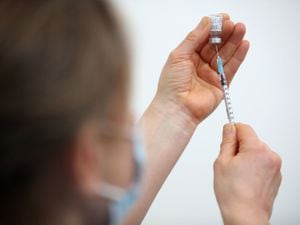What does the future hold for Stafford's County Hospital?
A hospital will need to undergo fundamental change if it is to survive beyond the next decade, bosses said today.

Stafford’s County Hospital has been hit with a fresh crisis after chiefs revealed it was ‘not sustainable’ in its current form, amid financial turmoil at the trust which runs it.
The University Hospitals of North Midlands NHS Trust (UHNM) is forecasting a loss of £71 million for 2017/18, with the underused County Hospital proving a considerable drain on its finances.
Emphasising the current state of the trust’s financial position, a report stated there was ‘very little capital funding left for routine maintenance’.
SPECIAL REPORT: County Hospital trust bosses reveal 'severity of challenges'
Bosses said they had arrived at a ‘crossroads’ and would need to ‘create a very different organisation’ if the hospital is to become sustainable.
The workforce will also need to be ‘redesigned’ as part of the overhaul in order to make the trust ‘financially sustainable’, a report said.
The urgent need for change at County Hospital was laid bare in a report which said: “We believe that UHNM will have to transform itself completely to deliver the vision outlined above and overcome its challenges. This will be a long and difficult process.”
County Hospital only became part of the UHNM Trust in 2014 in the aftermath of the Mid Staffs NHS Trust scandal but there are already fresh concerns over its future.
Part of a planned major shake-up includes utilising Stafford’s hospital as a ‘satellite’ site, providing support to the trust’s other facility, the larger Royal Stoke Hospital, which has been experiencing severe pressure.
Some services, such as elective operations, could be switched from Stoke to Stafford, allowing the city’s hospital to focus more on emergency care.
Officials said they believed patients would be willing to travel to Stafford for operations ‘rather than insisting on it being delivered in their local hospital’.
It is hoped the move will ease the burden on Royal Stoke while increasing usage of County Hospital.
A report on the future of Stafford Hospital said the ‘current set-up of services is not efficient’.
It continued: “Financial pressures represent a huge challenge for the trust to face and will require extensive transformation to bridge the deficit and make the organisation financially sustainable in the long term.”
The report said the ‘majority’ of urgent care would be delivered in Stoke but insisted ‘appropriate’ A&E services would remain for Stafford to serve the south of the county.
It said: “We will develop the role of County Hospital as a satellite site playing a critical role in the services UHNM provides.
"We will increase utilisation at the County Hospital by expanding elective services taking place there and exploring the opportunities to move further services over to County from Royal Stoke.
“We will provide emergency care at County to ensure patients in the south of our patch receive the required care, and we will ensure this is delivered effectively.
“We expect the majority of urgent and emergency care, and also specialised services, to take place at Royal Stoke. We also wish to transform urgent care at County Hospital.
"The Urgent Treatment Centre (UTC) is currently being developed on the County site.
"Urgent Treatment Centres are being set up in order to ease pressures on A&E, therefore we must ensure this is properly resourced in order to sufficiently ease pressure on our A&E and achieve our patient access targets.”
Campaign groups have held several protests in Stafford amid concerns about NHS services. Stafford MP Jeremy Lefroy said he had faith in the trust’s ability to make a success of County Hospital, insisting bosses recognised it was ‘absolutely vital’ to the county.
In a statement, trust chief executive Paula Clark, said: “The 2025Vision outlines a number of strategic objectives that will help us achieve our ultimate goal of becoming a centre of clinical and academic achievement.
“2017/18 has seen continued improvements towards meeting these objectives, including a positive CQC report, which rated UHNM as ‘Outstanding’ for Caring, and an unprecedented £50m of savings across our hospitals.
“All our staff deserve a huge amount of credit for these accomplishments and I’m looking forward to seeing what we can achieve in 2018/19.
“We recognise that there is a lot of work still to be done, and the Executive team will continue to monitor progress against our objectives.”
Stafford MP Jeremy Lefroy: A solution must be found
A solution must be found to ensure Stafford’s County Hospital can be run sustainably in the future, the town’s MP has said.
Jeremy Lefroy said giving up on the hospital was not an option as he declared: “It is not a question of if it is sustained. It has got to be sustained.”
The Conservative MP said he was confident health bosses were determined to make a success of Stafford Hospital and he was in favour of plans to move some services to Stafford from Stoke.
He also demanded ‘fairer funding’ for the county to ease the pressure on the cash-strapped hospital trust that runs it.
The University Hospitals of North Midlands NHS Trust has forecast a £71 million deficit for 2017/18.
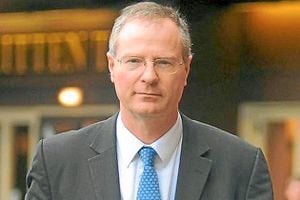
Mr Lefroy said: “We need more activity at County Hospital, not less. The proposed transfer of services into County Hospital makes a lot of sense.
“What we don’t need is the removal of significant services from County Hospital – that would inevitably make it less sustainable.
“I believe the trust wants to make it work. They recognise County Hospital in Stafford is absolutely vital, not just for people in Stafford and the surrounding area but the health economy. Without it Royal Stoke would simply not be able to cope.
“The trust in Staffordshire is under-funded. Part of the deficit is to do with unfair funding, part of it we have got to deal with ourselves.
“The trust will make every effort to make it sustainable. The work is there to be done.”
Meanwhile, a prominent health campaigner says he believes Stafford Hospital is gradually being ‘wound down’ after a radical plan was revealed for its future.
Julian Porter, from Support Stafford Hospital, said he feared it would eventually end up being taken over a private company after bosses said it was ‘not sustainable’.
Health chiefs have insisted ‘appropriate’ emergency care will continue to be offered in Stafford but Mr Porter said he was sceptical about whether the plan for the future of County Hospital would be a success.
He said: “All they are doing is moving the deck chairs around on a sinking ship.
NHS trust’s troubles coincide with missing key targets
The troubles at County Hospital come as the trust that runs it continues to struggle to meet key NHS performance targets.
Bosses at the University Hospitals of North Midlands NHS Trust, which also runs Royal Stoke Hospital, have admitted current A&E waits are unacceptable.
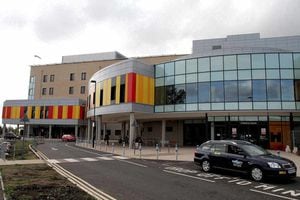
A quarter of patients who attended Staffordshire’s A&E departments in February were left waiting more than four hours to be seen.
The figure of 74.4 per cent was significantly below the 95 per cent target set by the Government.
The situation at County Hospital is better than that of the under-pressure Royal Stoke unit. In Stafford, 85.9 per cent of patients were seen in four hours compared to 72.4 per cent in Stoke.
Some cancer treatment targets were also missed. A total of 75 per cent of patients began treatment for cancer within 62 days of being referred, down on the 85 per cent target.
A report said: “UHNM is struggling to meet certain key operational targets. Performance against A&E waiting targets is particularly poor, as is referral to treatment targets and some cancer targets.
“The level of performance is not acceptable for our patients and is also having a negative impact on our financial position.”
It was also revealed last week 60 patients were left waiting on trolleys for more than 12 hours at Staffordshire’s A&E departments in February.
Trust chief executive Paula Clark put the trolley waits down to an ‘exceptionally busy’ period.


